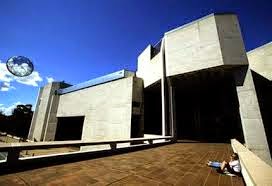Last Tuesday Tony Locantro and I did a joint talk to the
Recorded Vocal Art Society in London entitled ‘More Australian Singers on
Record’.
‘More’ because this was Tony’s second go with them – he had
previously done the premier division Aussie singers (Nellie Melba, Frances Alda,
Florence Austral, Peter Dawson, Joan Hammond, Joan Sutherland and so on).
This time around we featured a new range of singers, many of
them just as good as the first lot, but who had been substantially forgotten (including
the first recording of a female singer in Britain, Syria Lamonte in 1898, the
popular radio baritone Clem Williams, and two discs which may well be unique:
one of Australia’s most successful composers, Alfred Hill, singing his own most
famous song, ‘Waiata Poi’, and the great baritone, Harold Williams, in a
rousing Cobb and Co song, ‘Old John Bax’).
As is usual on such occasions, I was asked why it is that
Australia has produced such an amazing and continuous line-up of terrific
vocalists. And, as usual, I responded, ‘Well, I don’t really know.’
Is it because there was not so much to do by way of
entertainment before the advent of television, so that people had to make their
own? Although the population was quite small, Australia had the highest per
capita ownership of pianos in the late nineteenth and early twentieth
centuries. Is that a relevant factor? Did singing become compellingly
fashionable as a social asset? Was vocal skill seen as a way of escaping from
poverty? Is the climate in some way relevant?
Did the extraordinary success of Nellie Melba provide a
major sustaining role-model? Or was it perhaps connected with the vowel sounds
produced by Australians and the resulting embouchure? That was the theory of
the great teacher of so many successful young Australian singers in Paris,
Mathilde Marchesi. Maybe all of these were factors in the rise of outstanding
singers over a century and more.
When our set of four CDs, ‘From Melba to Sutherland’, is
published in a few months’ time, you’ll be able to answer that question for
yourselves!












